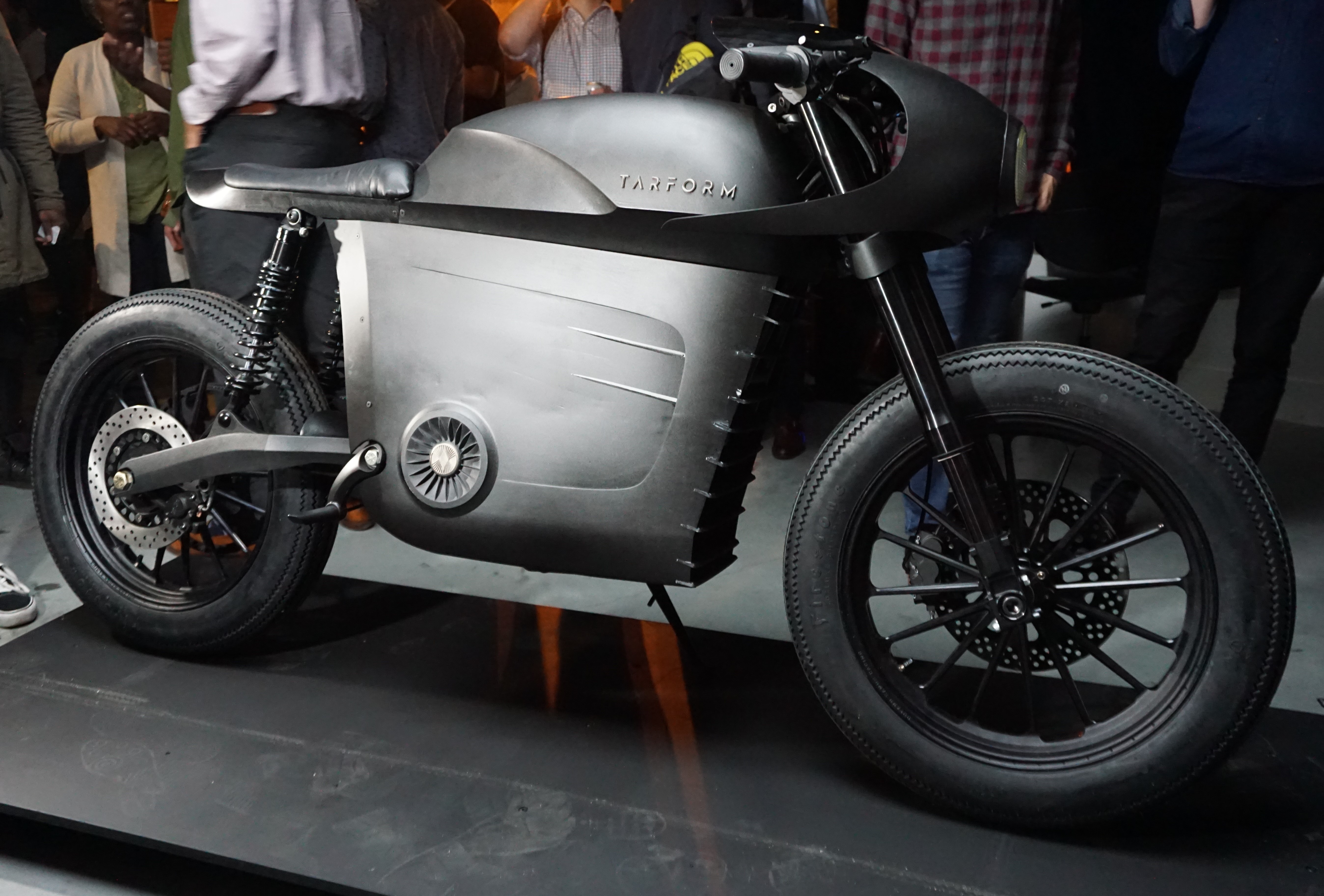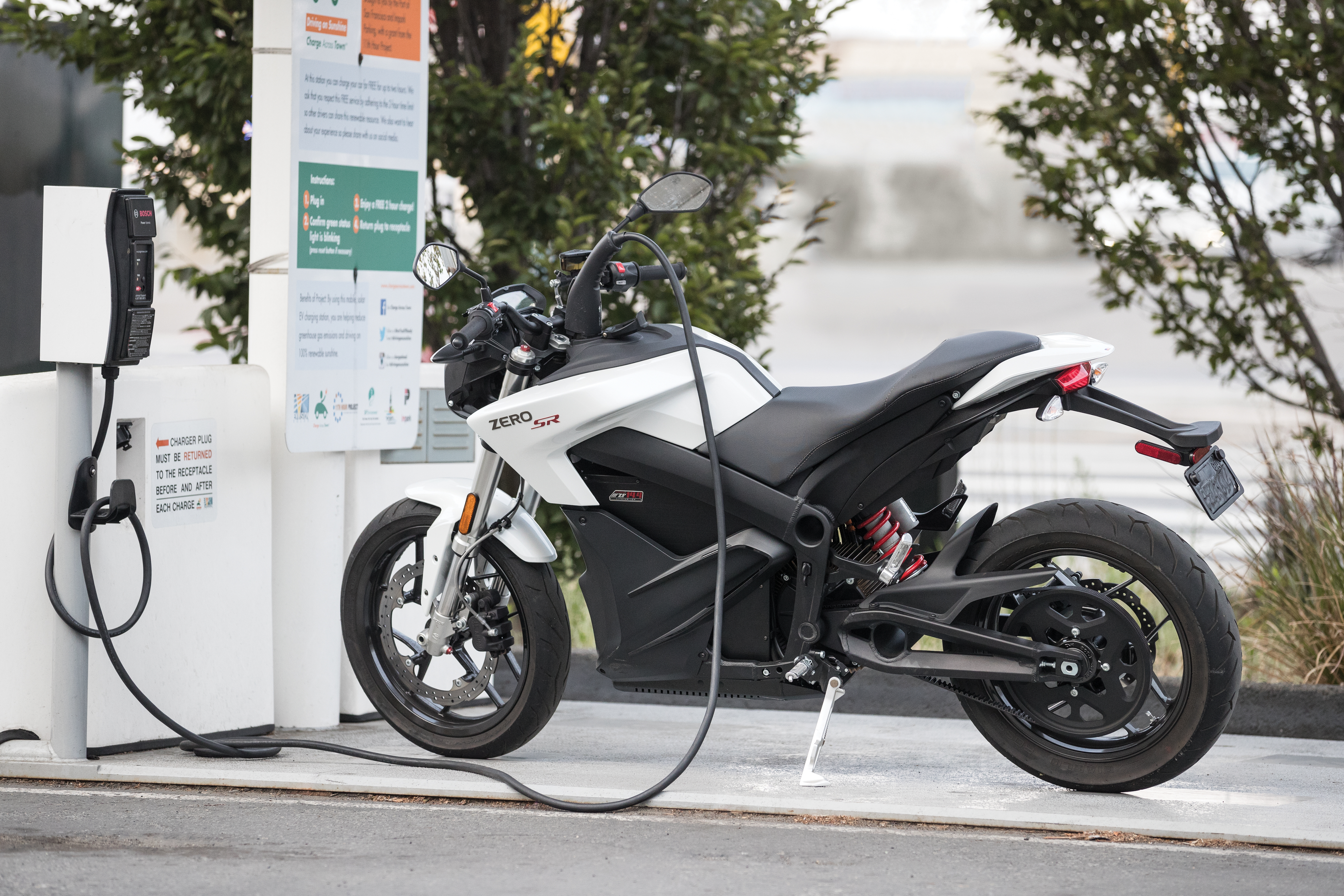U.S. declines in internet freedom rankings, thanks to net neutrality repeal and fake news
If you need a safe haven on the internet, where the pipes are open and the freedoms are plentiful — you might want to move to Estonia or Iceland.
The latest “internet freedoms” rankings are out, courtesy of Freedom House’s annual report into the state of internet freedoms and personal liberties, based on rankings of 65 countries that represent the vast majority of the world’s internet users. Although the U.S. remains firmly in the top ten, it dropped a point on the year earlier after a recent rash of changes to internet regulation and a lack of in the realm of surveillance.
Last year, the U.S. was 21 in the global internet freedom ranking — the lower number, the better a country ranks. That was behind Estonia, Iceland, Canada, Germany and Australia. This year the U.S. is at 22 — thanks to the repeal of net neutrality and the renewal of U.S. spy powers.
The report also cited “disinformation and hyperpartisan content” — or fake news — as a “pressing concern.”
It was only in June, after a protracted battle, that the Federal Communications Commission finally pulled the plug on the Obama-era rules that guaranteed the free and fair flow of internet data. Net neutrality — which promises to treat every user’s traffic as equal and doesn’t prioritize certain internet users or services over others — was dead. That was despite months of delays and a scandal that embroiled the FCC’s chairman Ajit Pai for allegedly lying to lawmakers over a falsified denial-of-service attack that he used to try to stifle criticism of his repeal plans. What did happen was an onslaught of citizens demanding that the net neutrality rules. But that was eclipsed by an astroturfing campaign that even used dead people to try to swing the decision.
What also dropped the U.S. a point was the near-clean reauthorization of the government’s surveillance laws, which passed with little debate despite a call for change. It was the first time to reel in the government’s spying powers since the Edward Snowden revelations a half-decade ago — but lawmakers buckled to pressure from the intelligence community, despite recognizing a long history of abuse and overreach by U.S. spy agencies.
Freedom House called the law’s renewal “a blow to civil rights and privacy advocates,” who advocated for change since long before Edward Snowden had a face.
A single digit drop in ranking may not seem like much, compared to the last-place contenders — Iran and China, predictably ranking in worst, but many see the U.S. as a beacon of free speech and expression — a model that others aspire to replicate.
As the report found, that goes both ways. The U.S. has its part to blame for the decline in at least 17 countries where “fake news” has been co-opted by oppressive regimes to justify crackdowns on dissent and free speech. The rise of “fake news,” a term largely attributed to Donald Trump — then a candidate for president — which spread like wildfire — and across borders — as a way to reject reported information or factual current events that were derogatory to a person’s views. In other words, it was a verbal hand grenade, lobbed whenever a person heard something they didn’t like.
Now, other regimes are cracking down on internet freedoms under the guise of fighting fake news. Philippines and Kazakhstan were both named by Freedom House as using “fake news” to restrict the internet by removing content and stifling the spread of views in the name of fighting misinformation.
While many might not care much for a country you know little about, it’s a reminder that the U.S. is still seen in high regard and other nations will follow in its footsteps.
Michael Abramowitz, president of Freedom House, said that the U.S. government in particular should take “a more proactive role” in stepping up their efforts to maintain a free and open internet to prevent playing into the hands of of “less democratic governments looking to increase their control of the internet.”
from www.tech-life.in
Tarform debuted new e-motorcycles but is there a U.S. market?
With more failures in the electric motorcycle industry than going concerns and a contracting American motorcycle market, now would seem to be an odd time to launch a new bike into the EV arena. But Tarform, a new startup that unveiled its first vehicle last month in Brooklyn, is undeterred.
That’s despite the fact that the company will likely face an uphill ride selling its high-end, higher priced e-motos.
The EV upstart recently pulled the cover off its first e-motorcycles—prototype Café and Scrambler models at Brooklyn’s NewLab.
The 295 and 320 pound machines bring 7 kilowatt-hour (KwH) Lithium-ION batteries, 43 horsepower, a top speed of 93 miles per hour, and 92 mile city riding ranges.

With the debut, the New York and Stockholm based startup now moves into testing phase and taking orders for its first production electric two-wheelers, expected to manufacture by late 2019.
Before getting back to the sobering EV topic of achieving scale and profitability, Tarform is committed to bringing a fresh design aesthetic to the motorcycle world.
The startup’s stated mission is “to set a new standard for two-wheeled transport by developing fully electric, zero-emission premium motorcycles, using sustainable materials and smart connectivity.”
For its prototype debut, the company did more than source parts and slap batteries into motorcycle frames.

Launching Tarform Motorcycles
“In order to distill the form to only the essentials, we were challenged to redesign every component,” said CEO and founder Taras Kravtchouk—an industrial design specialist, former startup head, and passionate motorcyclist.
From the swingarm to the pegs, speedo, fairing and handlebars—the company custom engineered a large portion of the Café and Scrambler prototype parts. Each also has a custom sound produced by a transducer inside the tank that matches a low pitch hum to motor revs.

A lot of the important stuff—such as the battery, suspension, and current power regulation system are sourced—but Tarform looks to shift toward more proprietary features, including a digital power delivery system with AI functions.
“Were talking to a company in Sweden to do a custom vehicle control unit to integrate Bluetooth connectivity [and ultrasonic proximity sensors],” Kravtchouk told TechCrunch.
“You’ll be able to sync your ride to an app…and get inputs on your riding behavior…to become a better rider.”
Tarform will offer two variants of its production motorcycles. Version one will be a 9kWh, 53 horsepower, 350 pound two-wheeler with a 95 mile per hour top speed and 129 mile range.
A larger 13.5 kWh battery, 80 horsepower, 395 pound model will be good for 168 miles.
Charging time will be 3.5 hours to 80 percent and 8 hours to full power using a standard electrical outlet. A fast-charger option will get the bikes to 80 percent in less than an hour.
The starting price to pre-order one of Tarform’s first production motorcycles is $18,000.

That compares to $8K for an entry level FX from Zero—America’s highest selling e-motorcycle manufacturer—and $24K for an Eva EsseEsse9 from Energica, a high-performance Italian EV startup with a U.S. sales network.
As for market positioning, Tarform aims to attract buyers by hitting that optimum balance of performance and design, according to Kravtchouk.
On power and range, “the question is how much we compromise the design [for a bigger battery], without making the bikes look fat and ugly. We’re trying to find a compromise,” he said.
Some people may want to have “a bike that looks sweet” with a slightly shorter ride distance, versus “a bike that goes further with a big battery jammed into it,” he said.
And that pivots to the business side of the equation for Tarform as an EV startup. A core part of the company’s value proposition is to create motorcycles that recapture the imagination of young folks.
As we’ve covered here at TechCrunch, the U.S. motorcycle industry has been in the doldrums since the recession.
New U.S. sales dropped roughly 50 percent since 2008, with sharp declines in ownership by everyone under 40. Motorcycle manufacturers are now largely competing for an aging and shrinking American buying demographic.
Females are one of the only growing ownership segments. And per an Insurance Institute for Highway Safety study, total motorcycles on the road actually increased from 2008 to 2017—though nearly 75 percent of registrations are for bikes over seven years old.
So some Americans are buying motorcycles—but often not new ones—and the industry is (by and large) not connecting with 20 and 30 somethings.
Tarform believes e-motos (theirs in particular) can bring at least some segment of a more tech and design savvy younger generation back to motorcycles.
Of course, they’re not the only ones, and as mentioned, there have already been several flops in the U.S. market. Electric motorcycle startups Brammoand Mission Motors already tried and failed. And per TechCrunch’s recent reporting, California based Alta Motors—that had $45 million in VC—ceased operations two weeks ago.

Meanwhile, Energica and Zero Motorcycles have revved up U.S. promotion, distribution and sales. The two have extensive R&D facilities and roughly $90 million in VC among them.
Then there’s Harley Davidson’s full commitment to EVs. This year the company announced the debut of a production e-moto by 2019, an expanded electric line-up to follow, and the opening of a Silicon Valley research facility to support it all.

With their largely untested and higher priced product Tarform, faces a rough ride to compete with these companies in what is still a shrinking U.S. motorcycle market.
But going head to head with Harley or capturing existing market share from other e-moto startups isn’t necessarily Tarform’s strategy, according to CEO Kravtchouk.
“We’re not in the arms race. We’re not saying we’re faster than anyone else…We think our positioning is a little bit different,” he said.
“Since we started showing the design…so many people who are not motorcycle riders have come forward and said, ‘I want to ride that thing,” explained Tarform’s CEO.
“So maybe our demographic is not existing motorcycle riders, but people who wished they were motorcycle riders. That’s what industry, gas or EV, has had such a hard time capturing.”
Over the next year Tarform will look to see “how the market responds” to its first offering before raising a round.
“Before getting big funding we want to show we’re able to build this in a small garage in Brooklyn. Then the startup will “want to partner up with major manufacturers to take it to the next level,” said Kravtchouk.
from www.tech-life.in
Social Capital’s Chamath Palihapitiya says ‘we need to return to the roots of venture investing’
In the first of many annual letters Chamath Palihapitiya will be penning as part of his firm’s new era as a technology holding company, the founder of Social Capital criticized the venture capital industry.
After highlighting the latest trends within VC — i.e. SoftBank’s Vision Fund, private equity activity in VC deals and inflated valuations — Palihapitiya divulged the asset class’s biggest problems. A copious amount of capital is flowing through the industry and VCs have an insatiable appetite for “unicorn status.” As a result, investors are paying more and more for equity in startups at all stages, hurting both startup employees and limited partners, who ultimately have to foot the bill.
“The dynamics we’ve entered is, in many ways, creating a dangerous, high stakes Ponzi scheme,” Palihapitiya, a former Facebook executive, wrote. “Highly marked up valuations, which should be a cost for VCs, have in fact become their key revenue driver. It lets them raise new funds and keep drawing fees.”
LPs and startup employees are suffering as a result of VC greed. Why? According to Palihapitiya, LPs are seeing delayed returns and startup employees are being offered stock options at inflated prices to match a company’s sky-high valuation.
“VCs bid up and mark up each other’s portfolio company valuations today, justifying high prices by pointing to today’s user growth and tomorrow’s network effects. Those companies then go spend that money on even more user growth, often in zero-sum competition with one another. Today’s limited partners are fine with the exercise in the short run, as it gives them the markups and projected returns that they need to keep their own bosses happy.”
“Ultimately, the bill gets handed to current and future LPs (many years down the road), and startup employees (who lack the means to do anything about the problem other than leave for a new company, and acquire a ‘portfolio’ of options.)”
Social Capital has had a rough go of it lately. The firm made the call to stop accepting outside capital about a month ago, with plans to invest off a “multi-billion dollar balance sheet of internal capital only.” That decision followed a string of high-profile exits that cemented the supposition that Social Capital, as we’ve known it, was over.
In his new role as a leader of a tech holding company, not a VC firm, Palihapitiya claims to have the solution to the aforementioned problem plaguing the venture and startup industry: “Return to the roots of venture investing.”
“The real expense in a startup shouldn’t be their bill from Big Tech but, rather, the cost of real innovation and R&D,” he said. “The second is to break away from the multilevel marketing scheme that the VC-LP-user growth game has become. At Social Capital, we did this by actively shifting away from funds and LPs to rely only on our own permanent capital moving forward.”
“Are we crazy to reject tens of millions of dollars a year in fees? We think not, and we believe it’s time to wait patiently as the air is slowly let out of this bizarre Ponzi balloon created by the venture capital industry.”
You can read the full letter here.
from www.tech-life.in
Twitter tests homescreen button to easily switch to reverse chronological
Twitter is digging one of its most important new features out of its settings and putting it within easy reach. Twitter is now testing with a small number of iOS users a homescreen button that lets you instantly switch from its algorithmic timeline that shows the best tweets first but out of order to the old reverse chronological feed that only shows people you follow — no tweets liked by friends or other randomness.
Sometimes you want to see the latest Tweets, first. We’re testing a way for you to make it easier to switch your timeline between the latest and top Tweets. Starting today, a small number of you will see this test on iOS. pic.twitter.com/7NHLDUjrIv
— Twitter (@Twitter) October 31, 2018
from www.tech-life.in
GM looks to cut costs by offering buyouts to 18,000 employees
General Motors has offered voluntary buyouts to 18,000 salaried employees in North America who have at least 12 years experience, as the automaker looks to cut costs all while investing in its electric and autonomous future.
The company has described this as a proactive measure aimed at preparing for coming headwinds such as slow sales in North America and China, commodity prices and tariffs.
But it’s just as much about preparing for the future. The company has been undergoing a transformation over the past four to five years, ditching expensive, money-losing programs like the Opel brand in Europe, and investing more into electrification and autonomous vehicle technology.
And it’s not wasting any time.
GM is giving these employees until Nov. 19 to decide whether they’ll take the buyout offer. Those who accept will receive severance beginning Feb. 1, 2019.
About 36% of the company’s 50,000 employees in North America are eligible for the buyout. A GM spokesman declined to say how many employees it expected to take the buyout, except to predict that it was unlikely the number would be anywhere close to 18,000.
GM has been on a three-year $6.5 billion cost-cutting mission that it expects to hit by the end of the year. GM CFO Dhivya Suryadevara said in the company’s earnings call Wednesday that GM had made $6.3 billion in cost-saving measures as of the end of the third quarter.
GM’s cost-cutting measures have happened in parallel with its investments and commitments to electrification and autonomous technology. GM acquired Cruise Automation for $1 billion in 2016. Earlier this year, the automaker said it would invest another $1.1 billion into its self-driving unit as part of bigger deal with Softbank. Cruise Holdings has said it will launch a commercial autonomous vehicle ride-hailing service in 2019.
It has also focused on hiring more software engineers, and will continue to add those kinds of jobs even as the buyouts begin, according to GM.
GM’s plan to launch 20 new all-electric vehicles globally by 2023 and increase production of the Chevy Bolt. At an event in September, GM chairman and CEO Mary Barra said the company is poised to build more all-electric vehicles as improvements continue at its recently expanded battery lab and a new LG Electronics plant in Michigan comes online.
The LG Electronics facility in Hazel Park will start making battery packs this fall to supply GM’s Orion Assembly Plant, where the automaker builds the all-electric Chevrolet Bolt.
from www.tech-life.in
Watch this little robot transform to get the job done
Robots just want to get things done, but it’s frustrating when their rigid bodies simply don’t allow them to do so. Solution: bodies that can be reconfigured on the fly! Sure, it’s probably bad news for humanity in the long run, but in the meantime it makes for fascinating research.
A team of graduate students from Cornell University and the University of Pennsylvania made this idea their focus and produced both the modular, self-reconfiguring robot itself and the logic that drives it.
Think about how you navigate the world: If you need to walk somewhere, you sort of initiate your “walk” function. But if you need to crawl through a smaller space, you need to switch functions and shapes. Similarly, if you need to pick something up off a table, you can just use your “grab” function, but if you need to reach around or over an obstacle you need to modify the shape of your arm and how it moves. Naturally you have a nearly limitless “library” of these functions that you switch between at will.
That’s really not the case for robots, which are much more rigidly designed both in hardware and software. This research, however, aims to create a similar — if considerably smaller — library of actions and configurations that a robot can use on the fly to achieve its goals.
In their paper published today in Science Robotics, the team documents the groundwork they undertook, and although it’s still extremely limited, it hints at how this type of versatility will be achieved in the future.
The robot itself, called SMORES-EP, might be better described as a collection of robots: small cubes (it’s a popular form factor) equipped with wheels and magnets that can connect to each other and cooperate when one or all of them won’t do the job. The brains of the operation lie in a central unit equipped with a camera and depth sensor it uses to survey the surroundings and decide what to do.
If it sounds a little familiar, that’s because the same team demonstrated a different aspect of this system earlier this year, namely the ability to identify spaces it can’t navigate and deploy items to remedy that. The current paper is focused on the underlying system that the robot uses to perceive its surroundings and interact with it.
Let’s put this in more concrete terms. Say a robot like this one is given the goal of collecting the shoes from around your apartment and putting them back in your closet. It gets around your apartment fine but ultimately identifies a target shoe that’s underneath your bed. It knows that it’s too big to fit under there because it can perceive dimensions and understands its own shape and size. But it also knows that it has functions for accessing enclosed areas, and it can tell that by arranging its parts in such and such a way it should be able to reach the shoe and bring it back out.
The flexibility of this approach and the ability to make these decisions autonomously are where the paper identifies advances. This isn’t a narrow “shoe-under-bed-getter” function, it’s a general tool for accessing areas the robot itself can’t fit into, whether that means pushing a recessed button, lifting a cup sitting on its side, or reaching between condiments to grab one in the back.
As with just about everything in robotics, this is harder than it sounds, and it doesn’t even sound easy. The “brain” needs to be able to recognize objects, accurately measure distances, and fundamentally understand physical relationships between objects. In the shoe grabbing situation above, what’s stopping a robot from trying to lift the bed and leave it in place floating above the ground while it drives underneath? Artificial intelligences have no inherent understanding of any basic concept and so many must be hard-coded or algorithms created that reliably make the right choice.
Don’t worry, the robots aren’t quite at the “collect shoes” or “collect remaining humans” stage yet. The tests to which the team subjected their little robot were more like “get around these cardboard boxes and move any pink-labeled objects to the designated drop-off area.” Even this type of carefully delineated task is remarkably difficult, but the bot did just fine — though rather slowly, as lab-based bots tend to be.
The authors of the paper have since finished their grad work and moved on to new (though surely related) things. Tarik Tosun, one of the authors whom I talked with for this article, explained that he’s now working on advancing the theoretical side of things as opposed to, say, building cube-modules with better torque. To that end he helped author VSPARC, a simulator environment for modular robots. Although it is tangential to the topic immediately at hand, the importance of this aspect of robotics research can’t be overestimated.
You can find a pre-published version of the paper here in case you don’t have access to Science Robotics.
from www.tech-life.in












